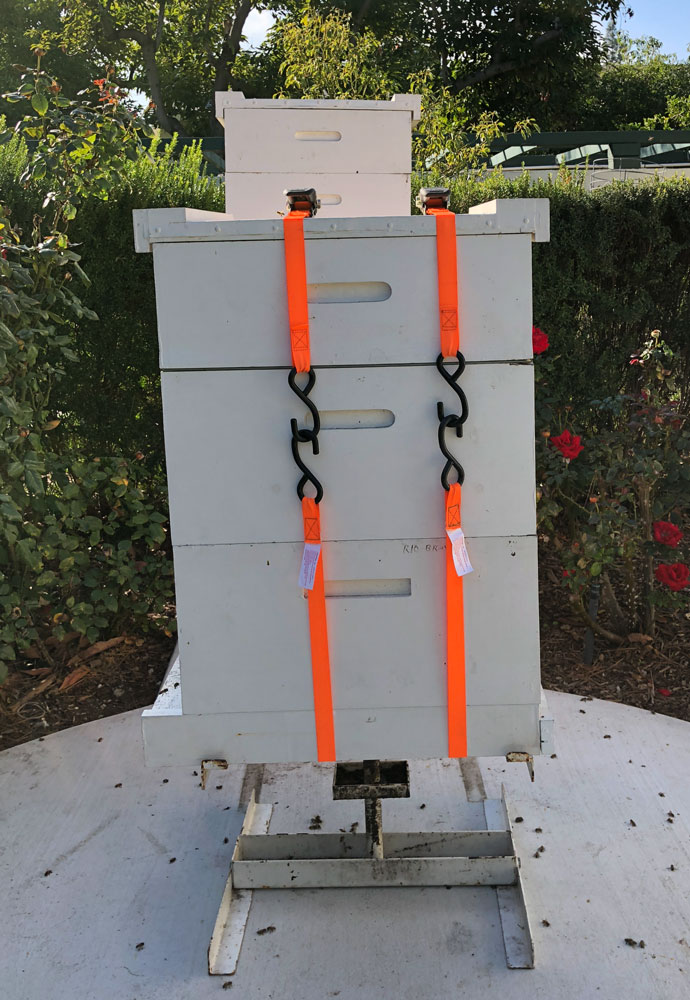
SoCal Beekeeping
A Hive for Elizabeth
11/11/2018
P. Michael Henderson
I decided to sell my Rio Bravo hive. I want to split my Loma hive in the spring and that would have given me four hives, which is more than I want in my backyard. Elizabeth had expressed an interest in having a hive so I contacted her and she agreed to buy it. I suggested that we wait until cooler weather so that all the bees would be in the hive at night. During warmer weather they had been bearding on the outside at night, which would have made it more difficult to block up the entrance for the transport.
Our agreement was for Elizabeth to get two brood boxes, each with 10 frames of brood, a bottom, a top, and one super with 10 frames and comb. She also purchased a "single leg" stand from me. I've found that the single leg is the best stand for keeping ants out of the hive.
Sunday, November 11, 2018 worked out for both of us to move the hive.
A few days prior to the move I strapped the hive together. I used two straps when one would have done fine, but I'd rather be safe than sorry. There are a couple of reasons for using a strap. One is that you don't want the hive to come open while you're transporting it. If the top came off, or the super fell off, the bees would be all over us. Jostling them around during the transport will cause them to think the hive is being attacked and they will defend aggressively.
The second reason is that we're going to use a hive lifter, and the hive lifter hooks to the hive at the bottom brood box. Without the straps, the bottom would fall off when we picked up the hive.

The night before the move (Saturday night, well after dark) I blocked up the hive entrance with a small towel.
Bright and early (just about sunrise, 6am) Elizabeth and her husband, Robbie, came to my place with a pickup truck. Sunrise is good because the bees are not trying to leave the hive yet and we can see what we're doing. From left to right, it's Elizabeth, me, and Robbie. We're wearing bee suits only as a precaution in case something happened to the hive and the bees began to escape. The way we're going to move the hive no bees should escape - but you want to be prepared. It was a cold morning so I was glad to have the extra layer of the bee suit.
You want to move a hive very early in the morning or after sunset because the bees are all in the hive and are not trying to get out. If you block up the entrance but wait until later in the day to move the hive, I find that the bees get agitated and really come out when you remove the block to the entrance.
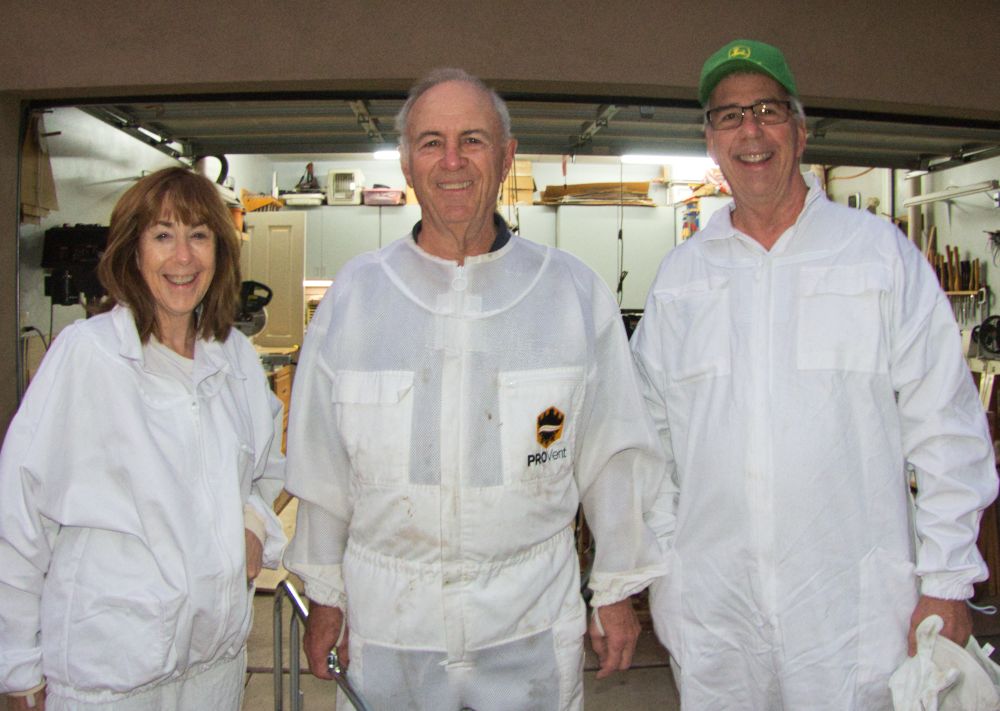
Note: I photoshopped all of these pictures, which makes it look like it was brighter than it really was.
We used a hive lifter, which is an ingenious device that allows two people to handle a hive fairly easily. Here are Robbie and I getting the hive lifter in place.
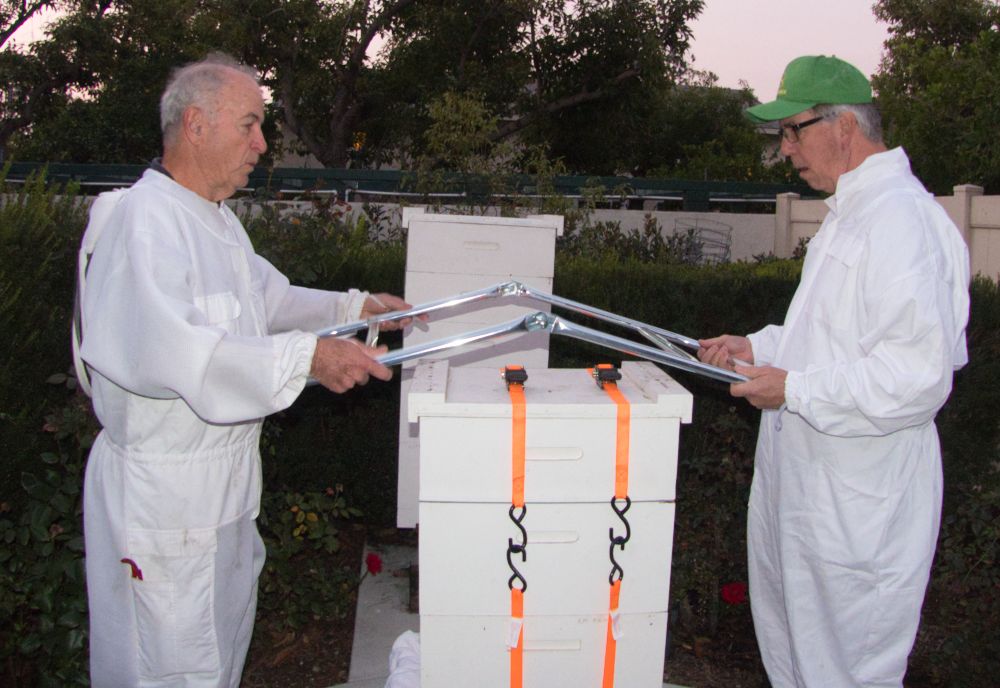
The hive lifter has a tab on each side that fits into the hand-holds on the hive box.
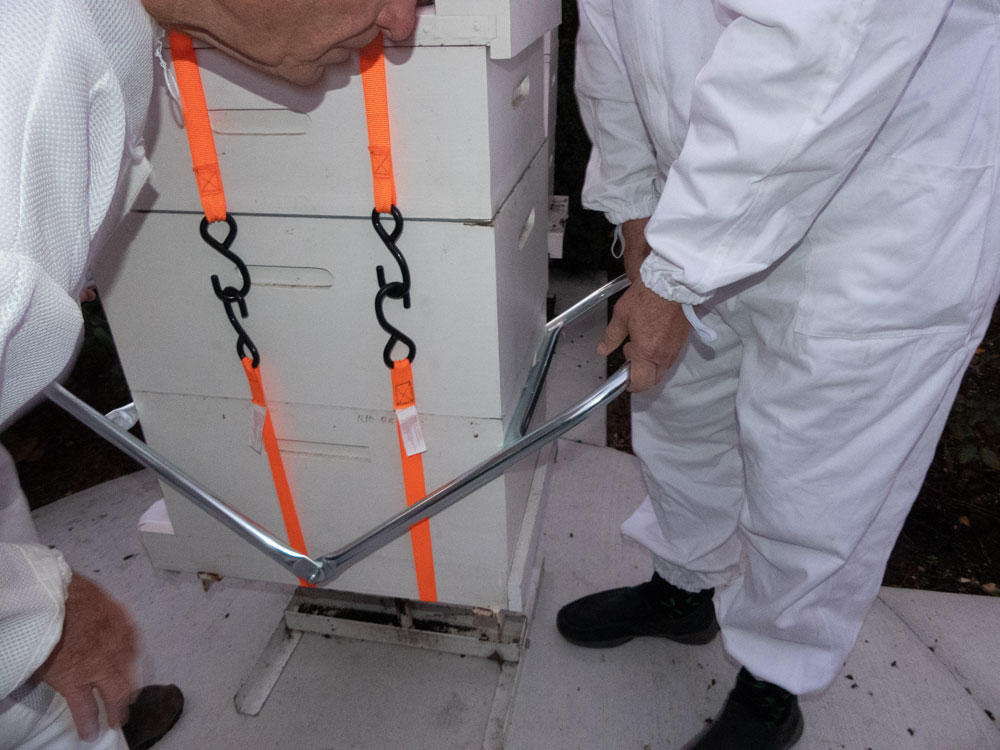
We each took an end and lifted the hive. It was heavy - I'm guessing about 150 pounds or more. Each of the brood boxes is completely full of brood and honey, and there's some honey in the super - plus the weight of the wooden components.
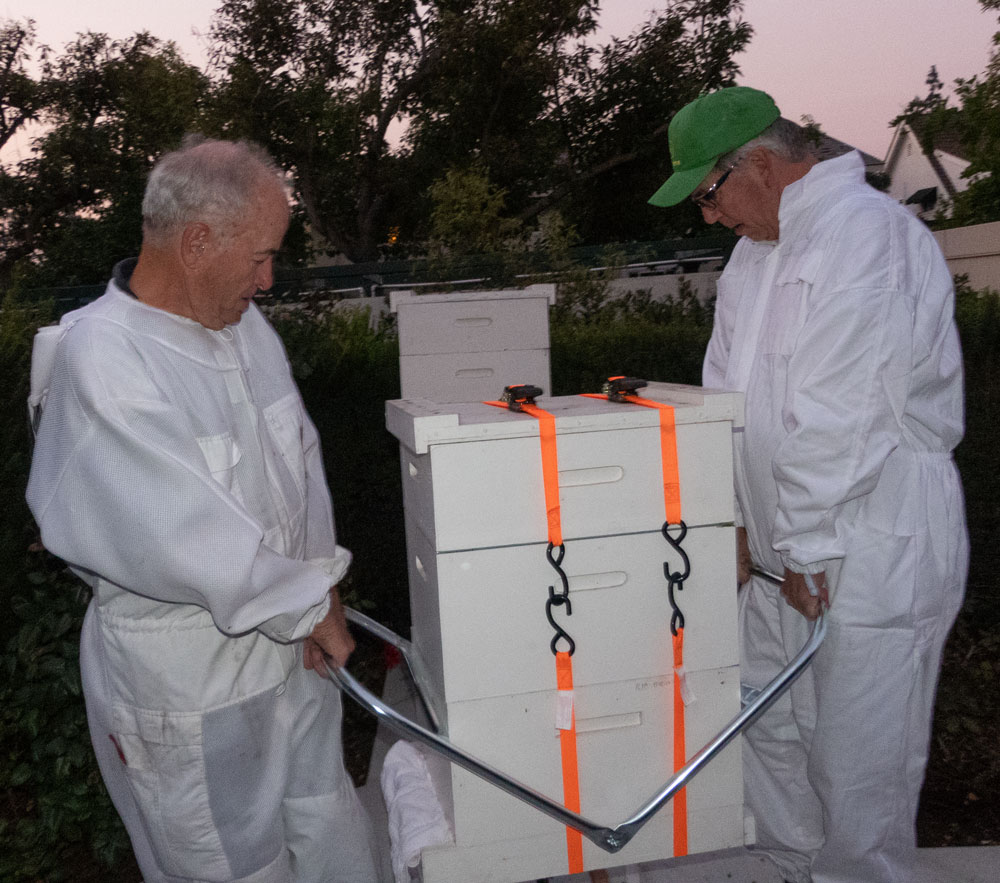
So here we go carrying the hive to the pickup truck. You can see the towel I stuck in the entrance.
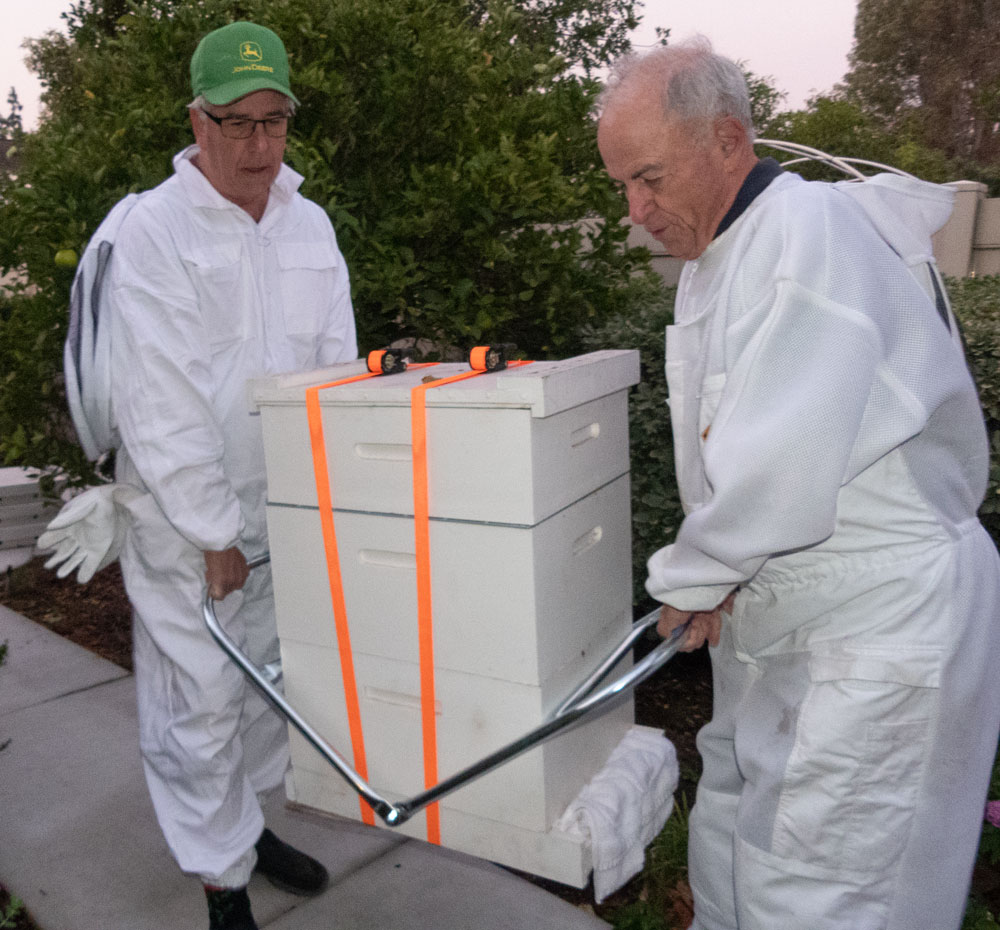
We lifted it into the truck.
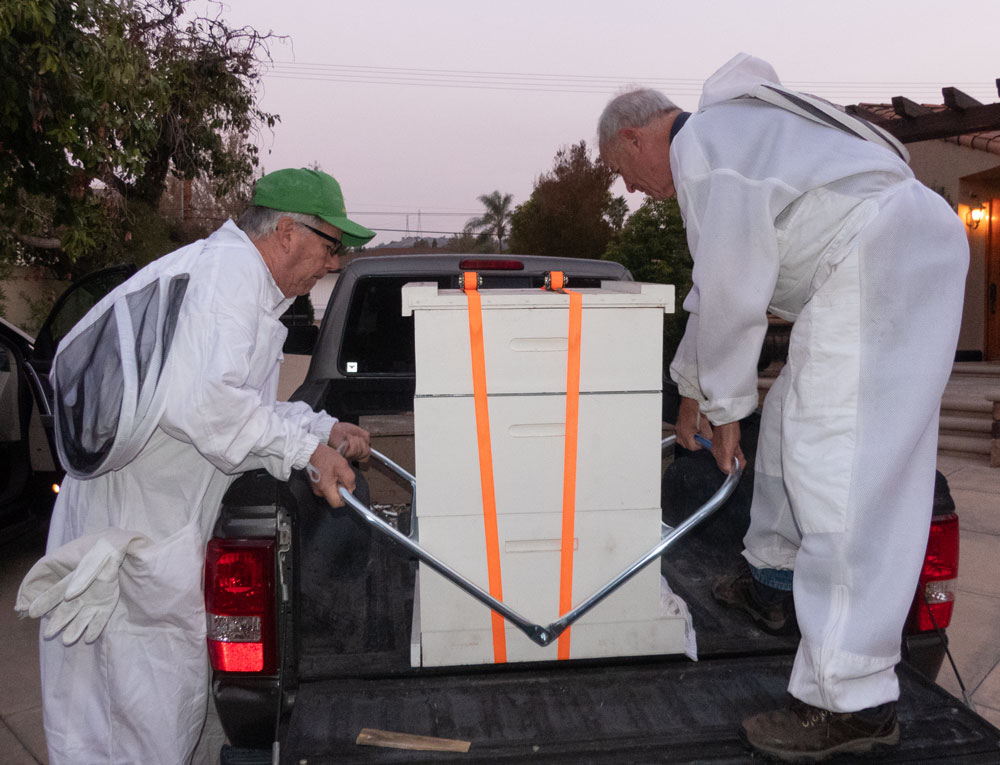
Elizabeth supervised.
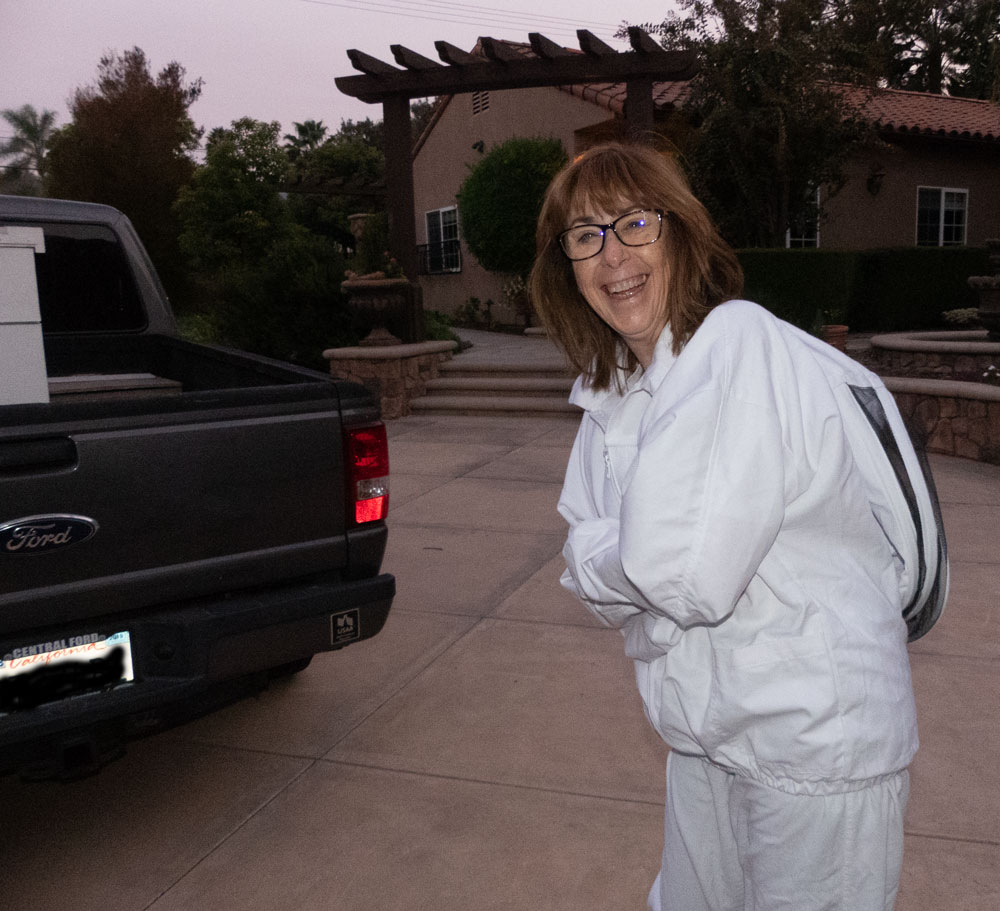
Robbie and Elizabeth left in the pickup and we followed.
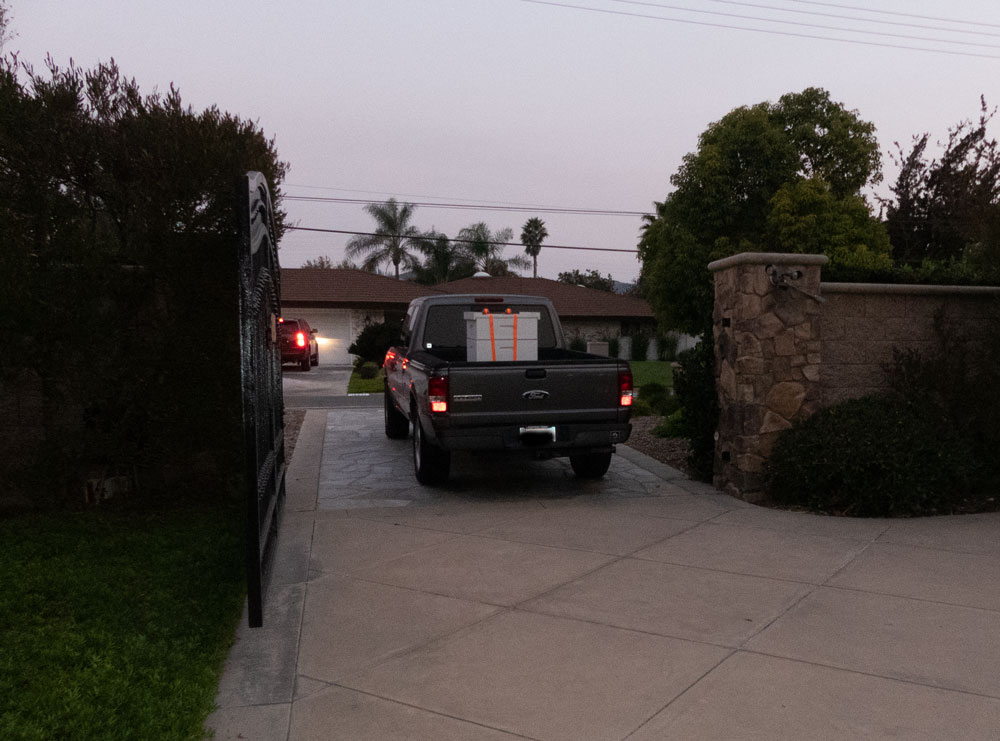
They took it easy and the hive seemed to ride well. The bees only had to travel about a mile.
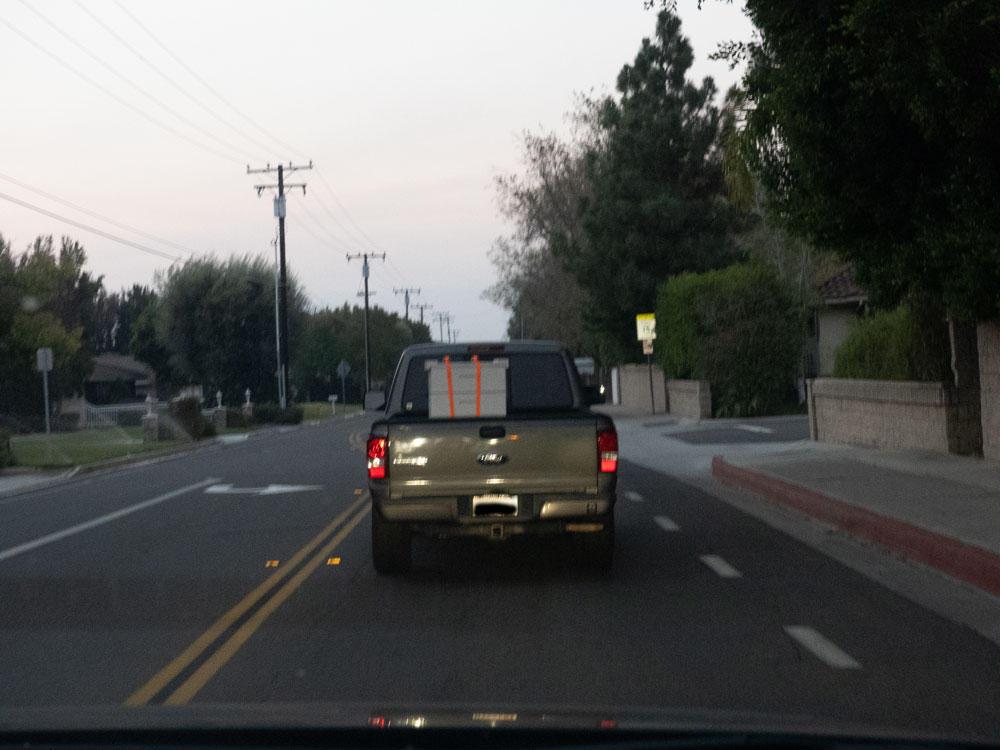
When we arrived at their place, Robbie went to get the tractor so we wouldn't have to carry the hive to the back of their property. Elizabeth and I chatted about bees.
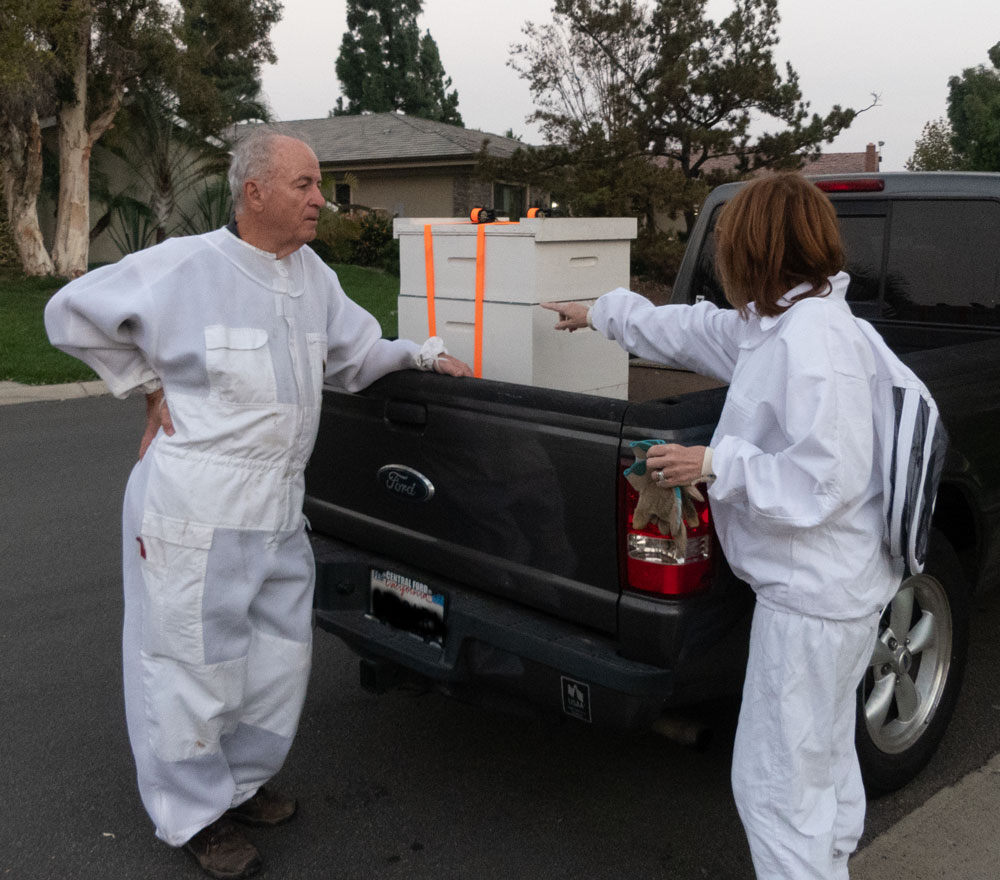
Judy liked this picture.
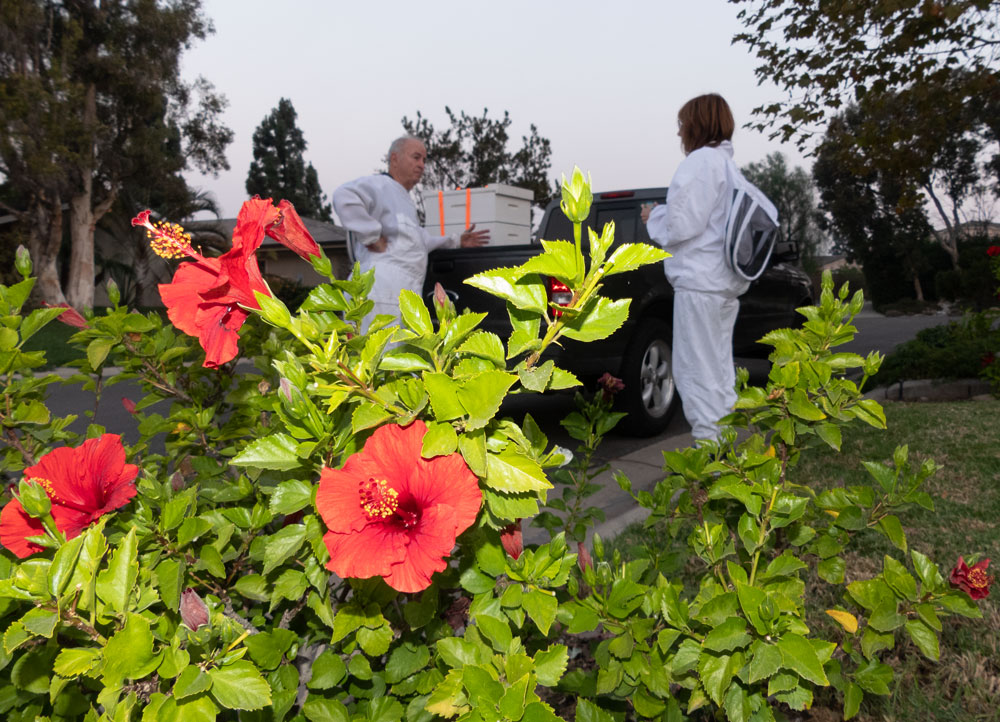
Robbie arrived with the tractor and trailer.
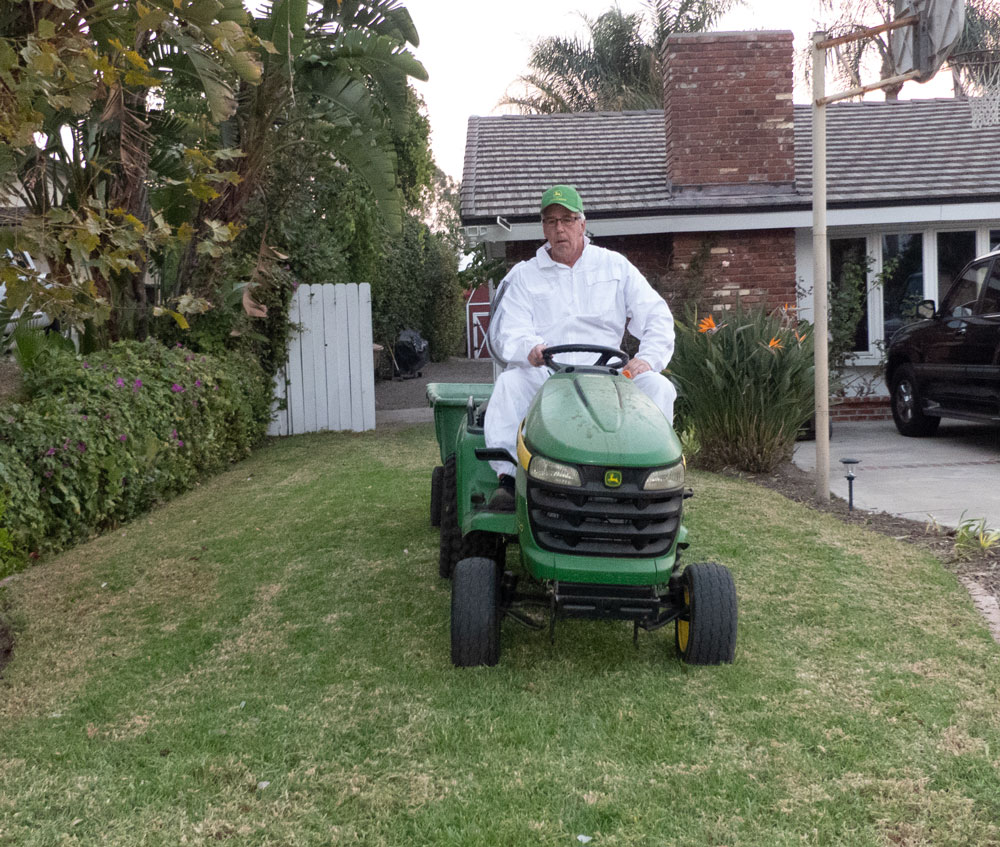
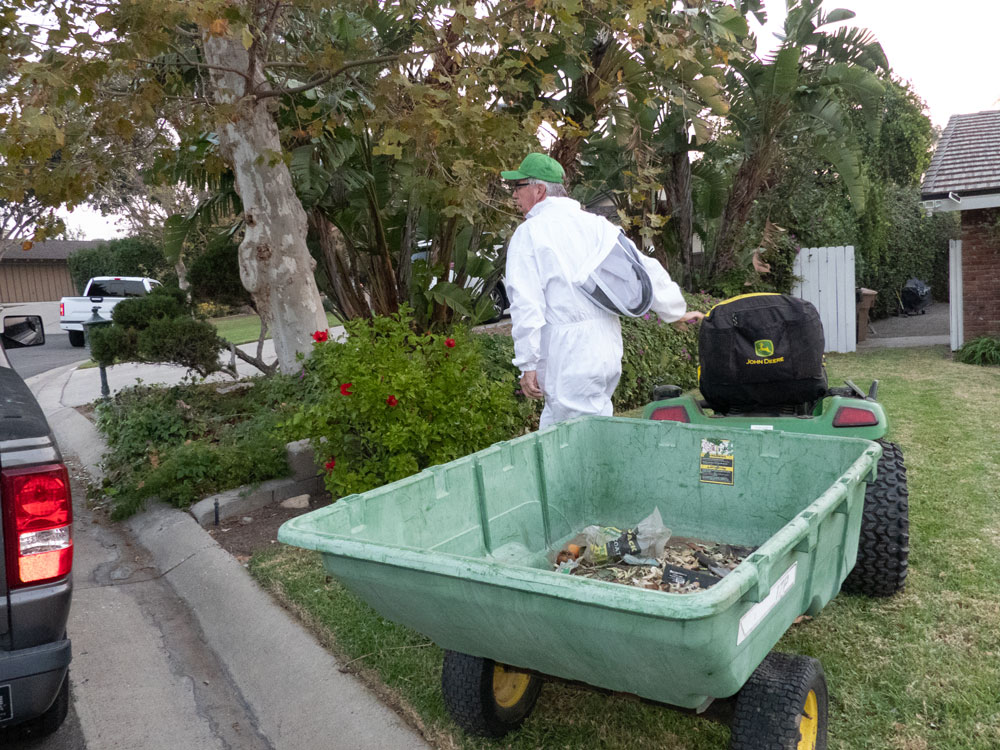
We took the hive out of the truck and put it in the trailer.
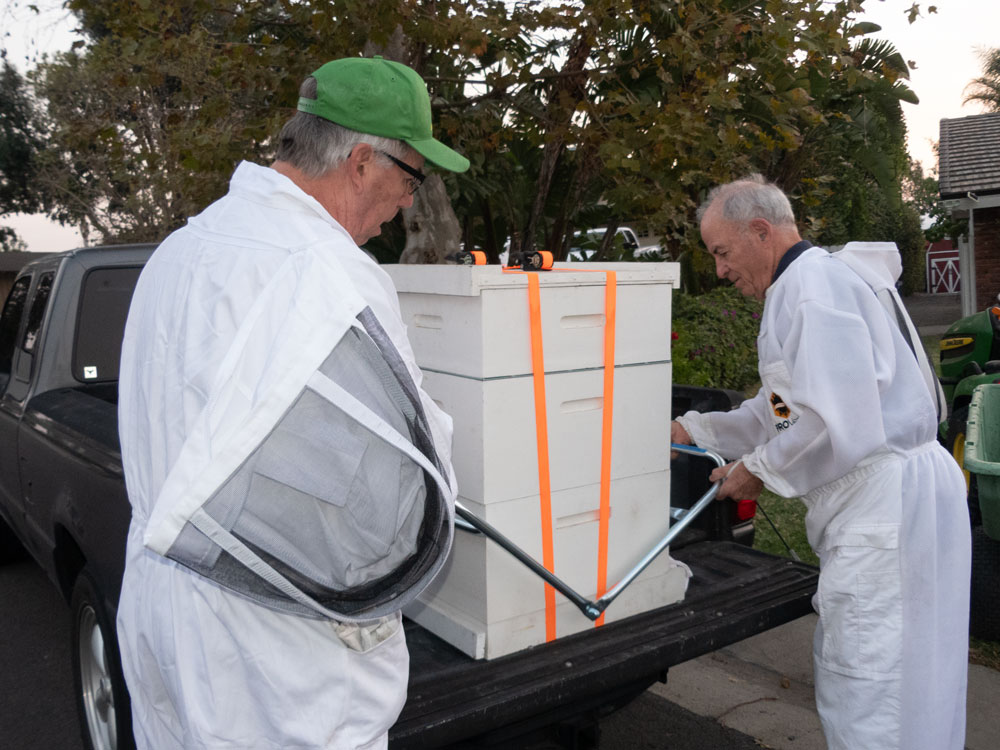
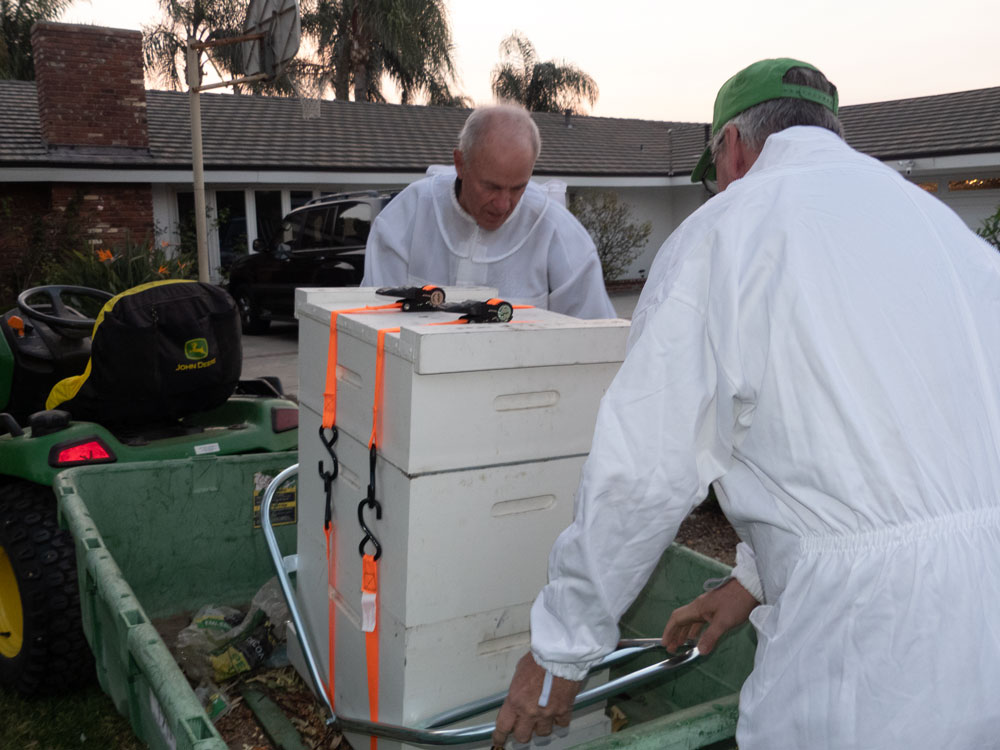
Here's Robbie heading to the back of the property.
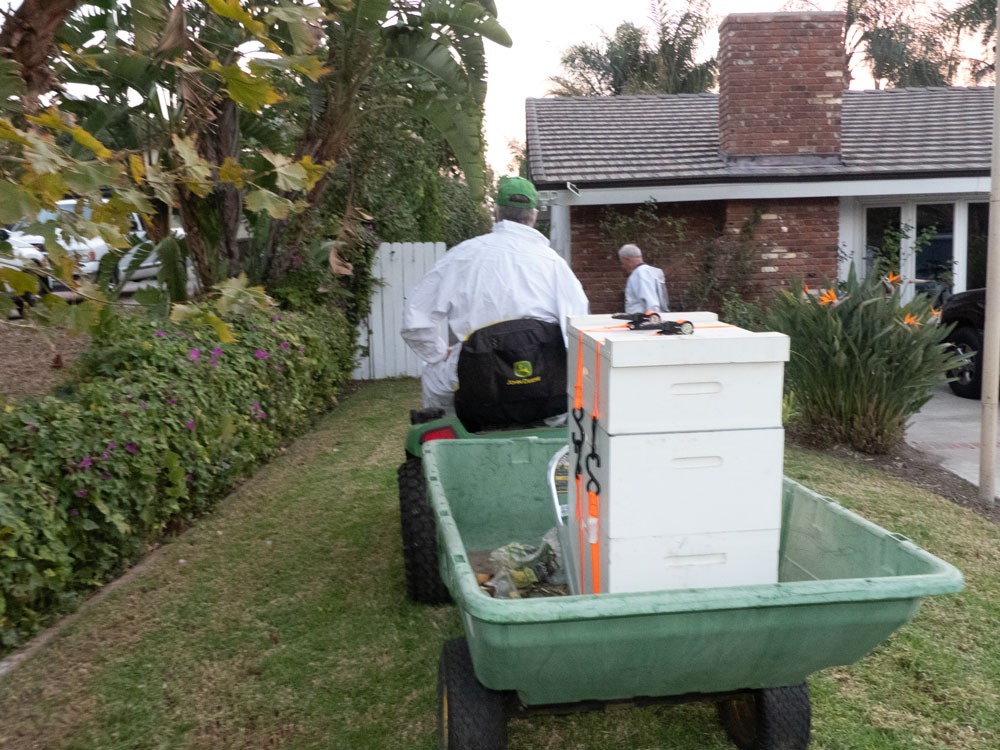
The back of their property where the hive will be placed has many fruit trees.
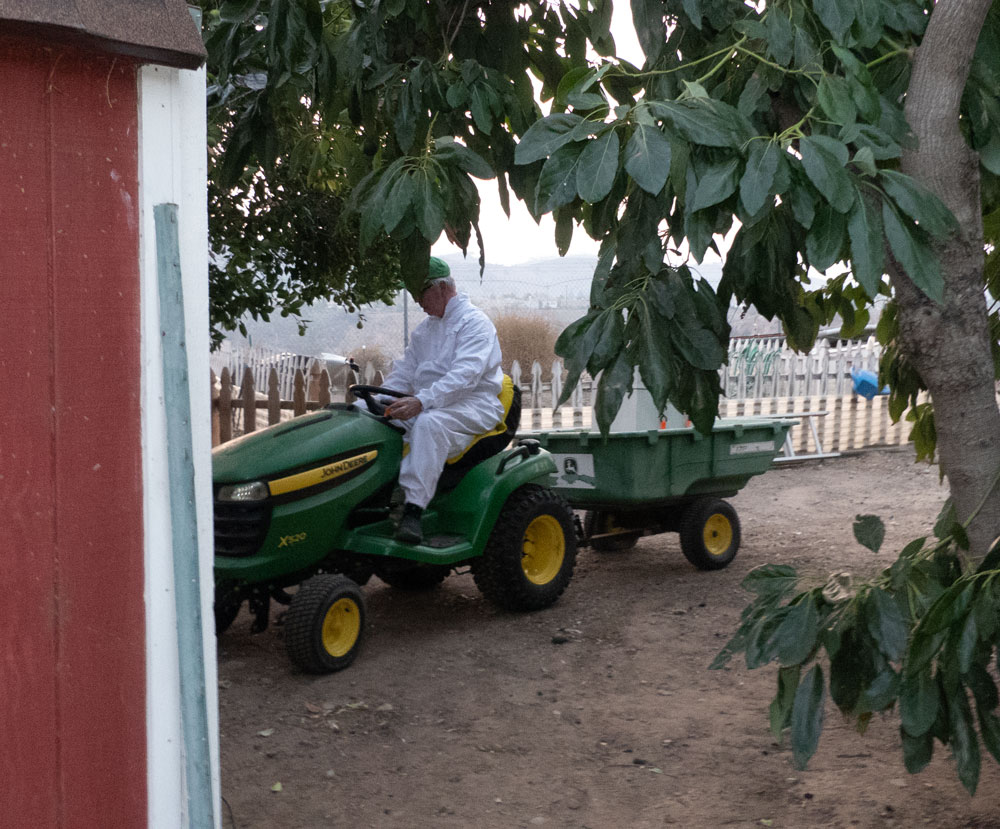
They had already set up the hive stand, so all we had to do was carry the hive to the stand.
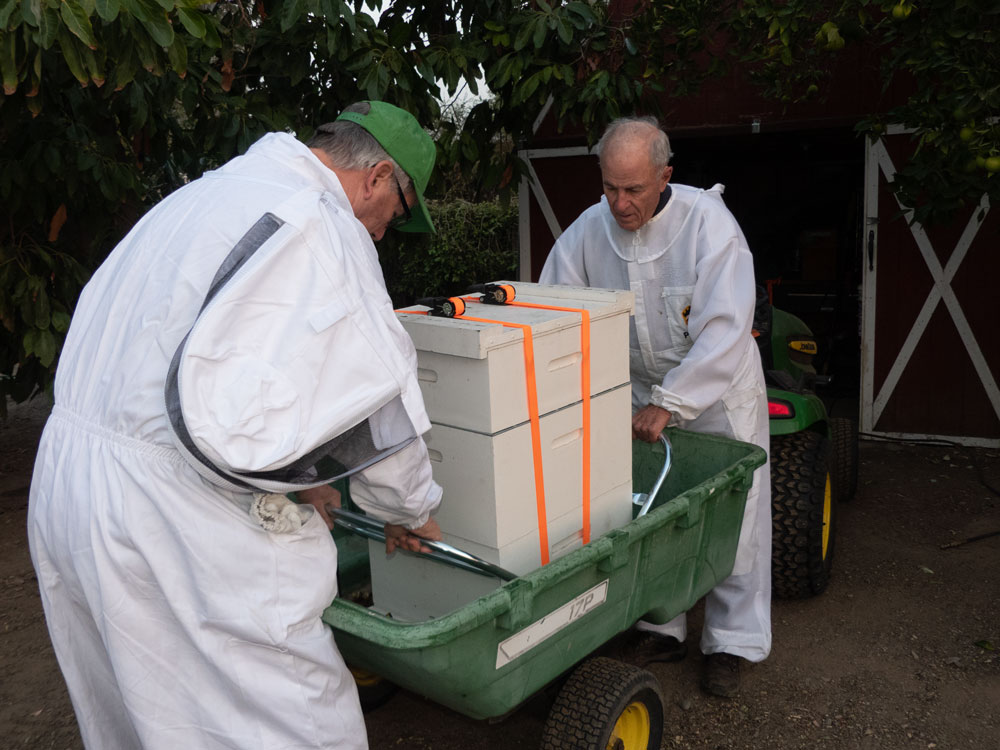
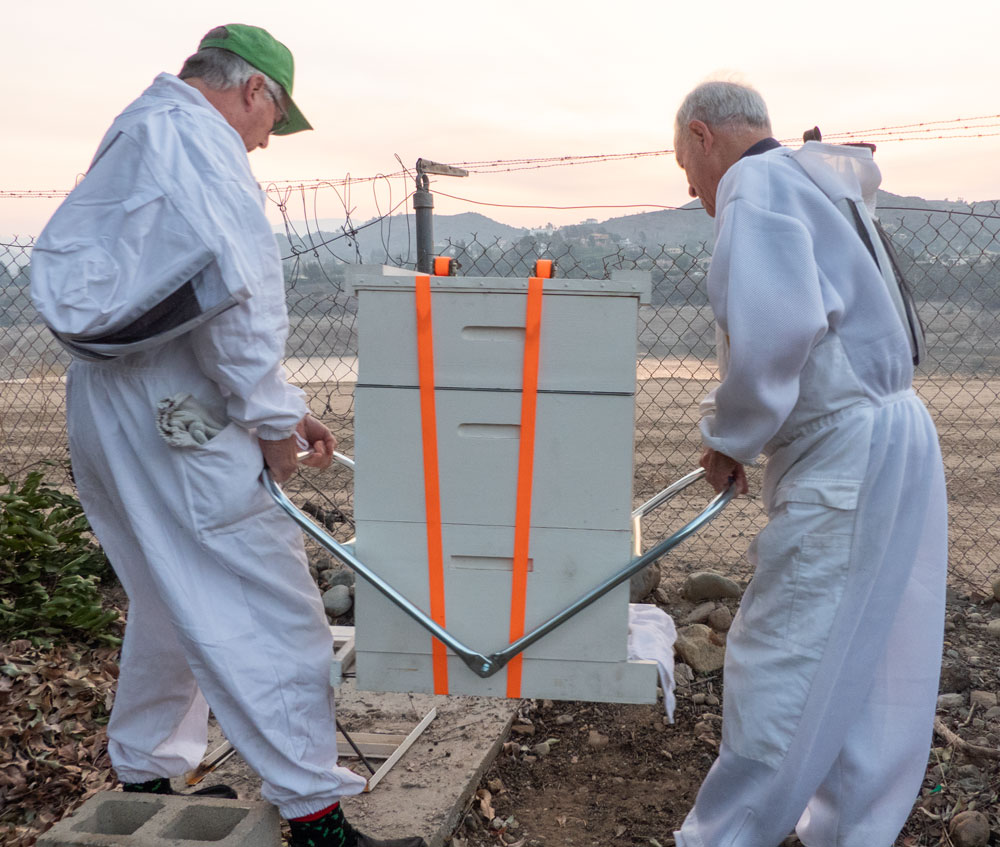
Then we removed the straps.
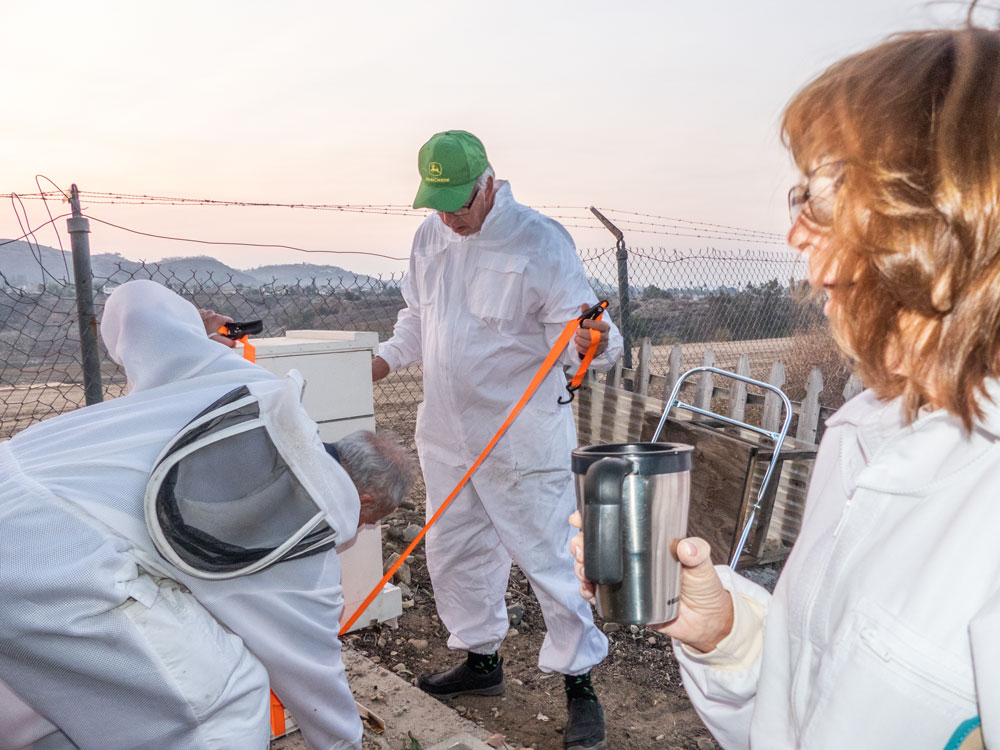
We had the hive in place just as the sun was lighting the horizon.
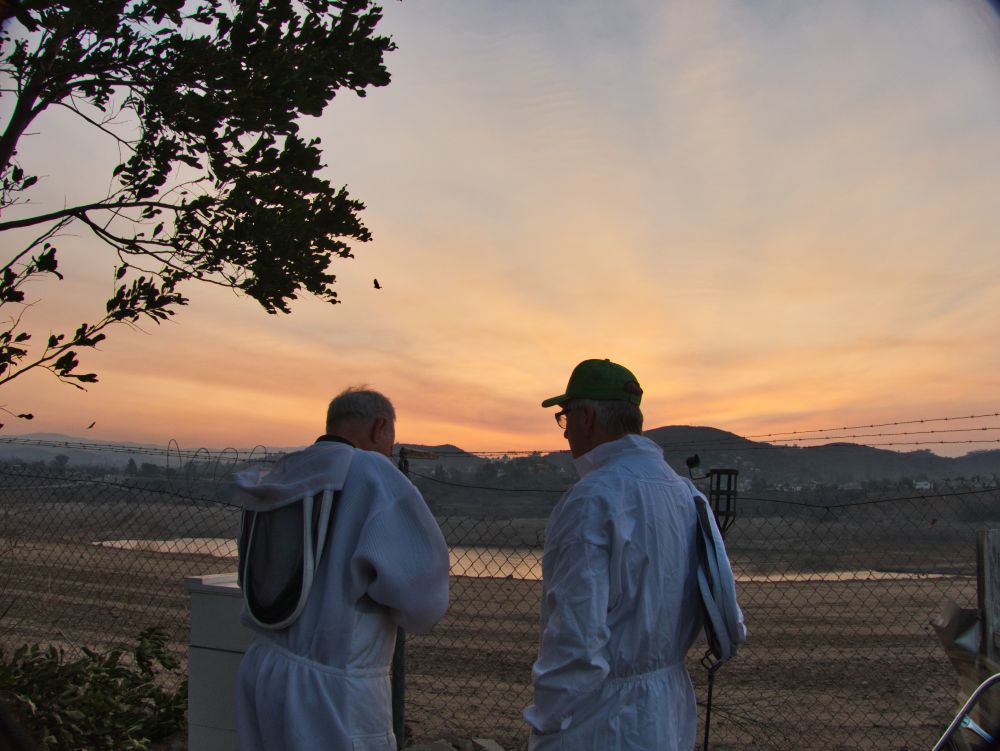
The last step was to remove the towel blocking the entrance.
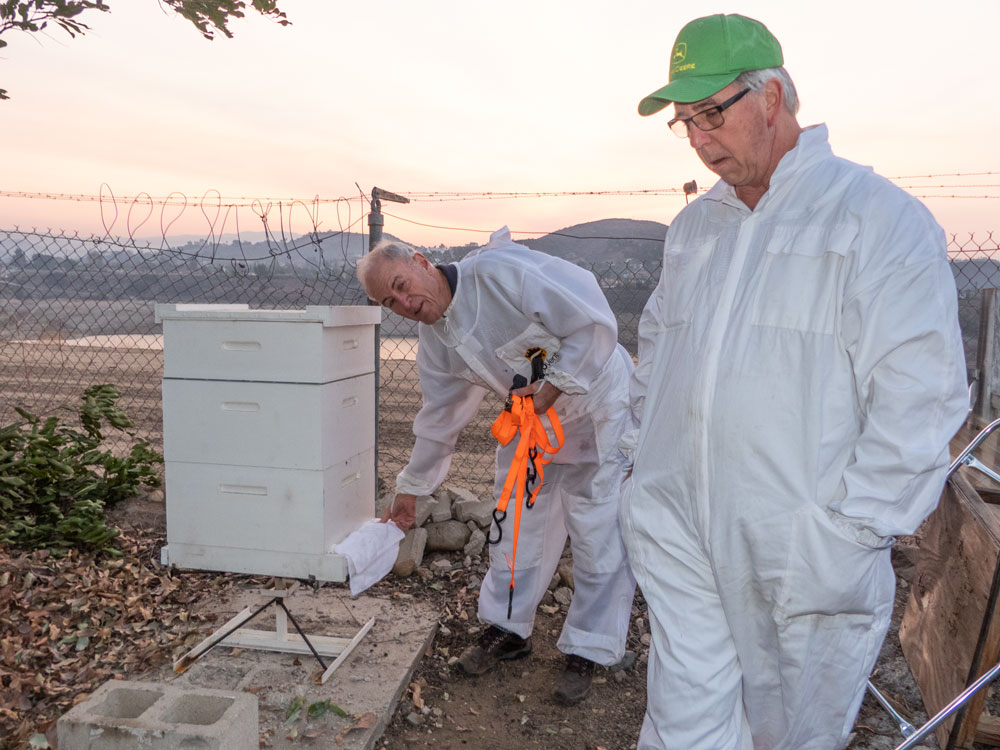
We stood away from the hive and watched what the bees were going to do. Some bees came out on the porch but they quickly went back into the hive. It was a cold morning.
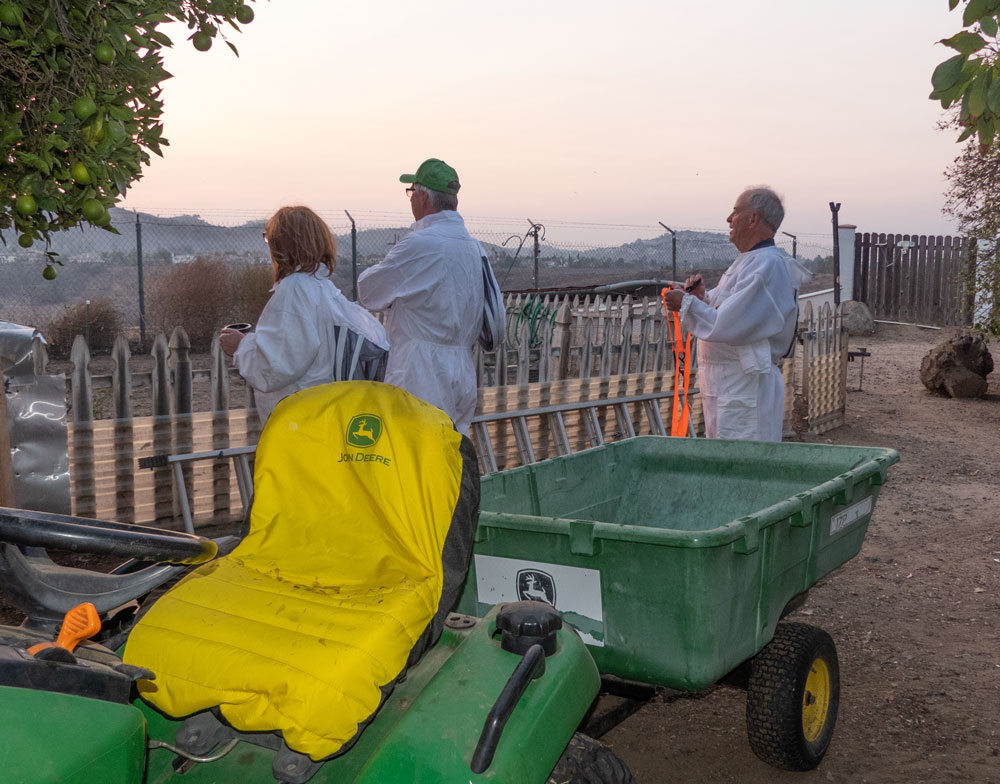
Here's the hive in its new location. I didn't notice until after the towel was removed that the hive is leaning slightly to the back. That's not good because when it rains, water can run into the hive. It's better to have the hive leaning slightly forward. Robbie said that he'd get some wedge shims at Home Depot and put them between the stand and the hive, at the back of the hive. Sufficient shims should make the hive lean forward slightly.
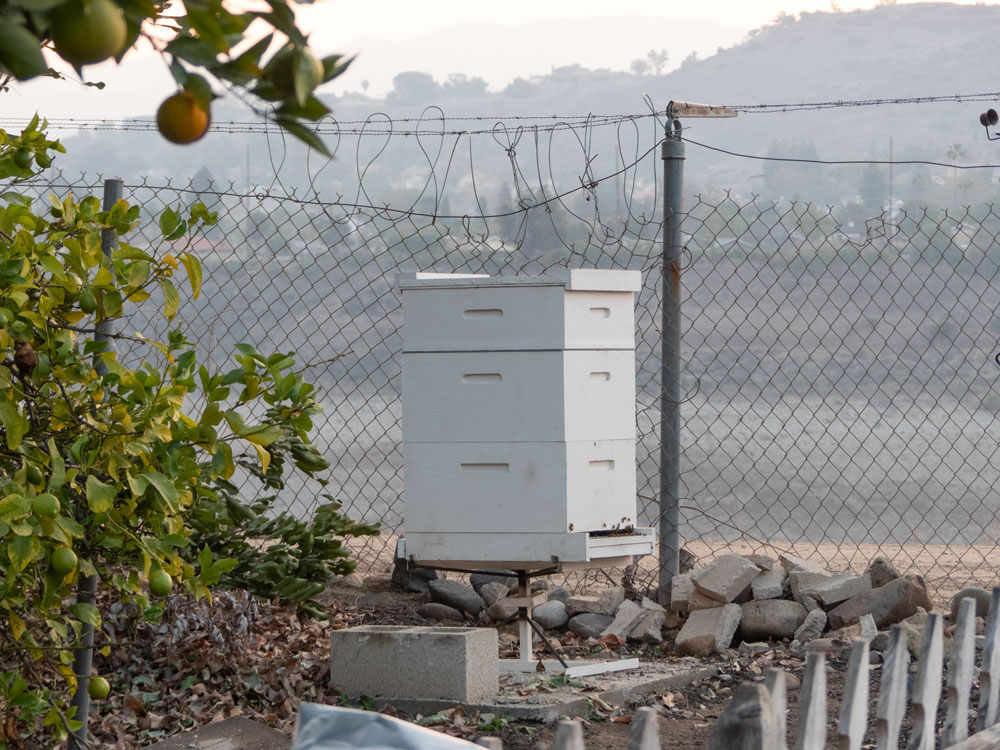
And that was it. Here we are after the move.
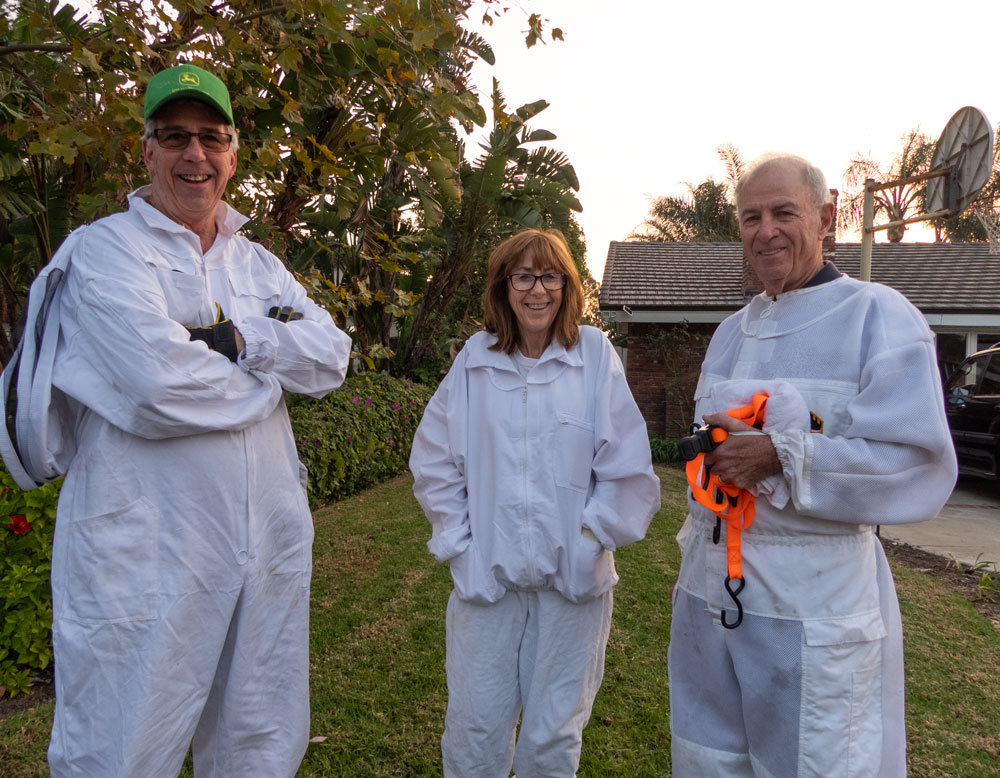
[Update 4/15/2019] I went over to Elizabeth's place to check out the hive with her. I expected that the hive would be full of honey. The hive had done well while I had it and we took two supers of honey off of it before I sold the hive to Elizabeth.
But when we went into the hive, there was no honey in the supers - none. And the population was down. I checked the frames and found some empty queen cells so I assume they swarmed at some time between when I delivered the hive and today. There were a few scattered capped brood cells and I think I saw some eggs but I didn't have my glasses on.
I'm somewhat at a loss as to why the hive hasn't done better. They were a good strong hive when I had them and produced a reasonable amount of honey. What could have happened to them?
I'll go back and check the brood frames in a couple of weeks to see if there's capped brood. If so, at least we'll know that the new queen is in the hive and laying.
Go back to my main page here